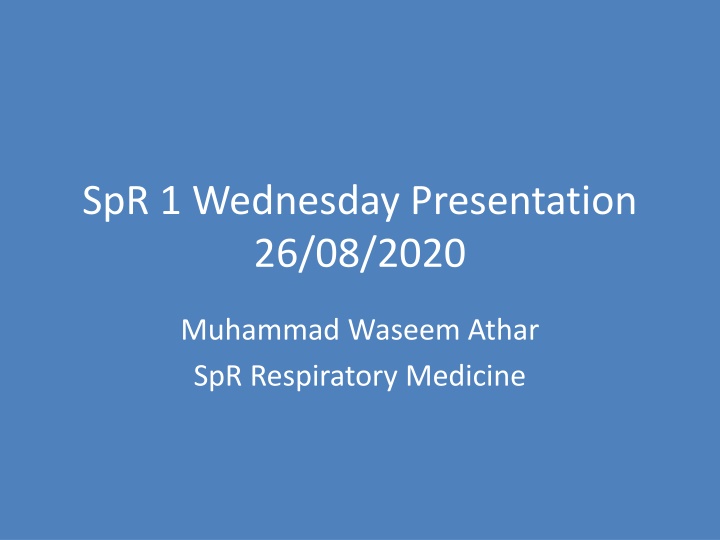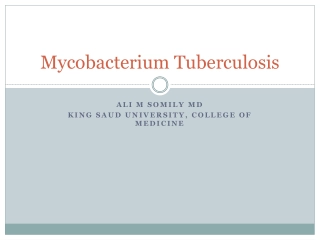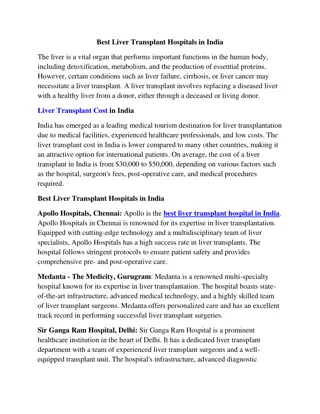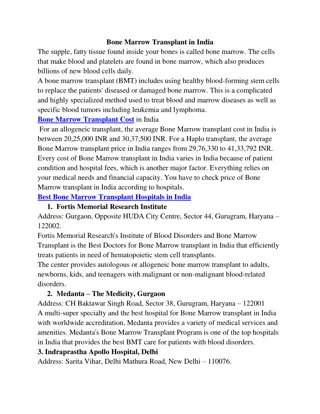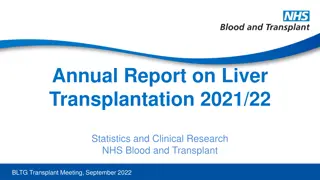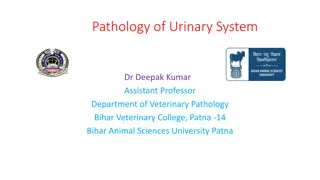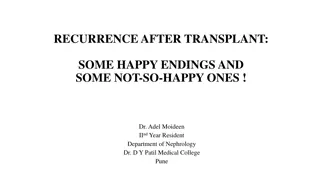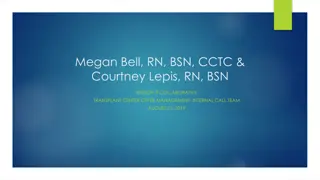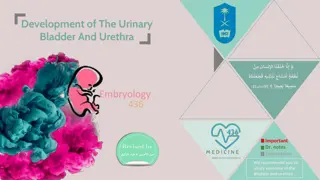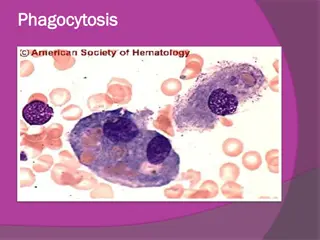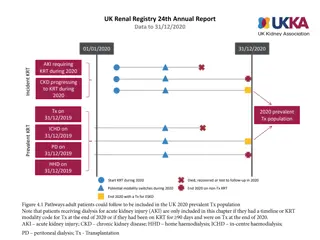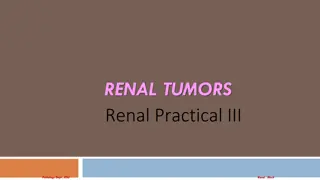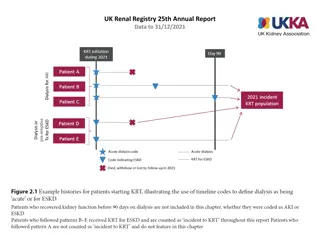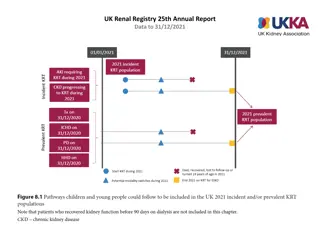Management of Urogenital Tuberculosis in a Renal Transplant Recipient
Urogenital tuberculosis is a rare but significant complication in renal transplant recipients. This case study follows a 64-year-old female with a history of renal transplant presenting with urinary symptoms. Through investigations and decision-making, the diagnosis of urogenital TB was established. Explore the clinical approach, differential diagnoses, and management strategies in such cases.
Download Presentation

Please find below an Image/Link to download the presentation.
The content on the website is provided AS IS for your information and personal use only. It may not be sold, licensed, or shared on other websites without obtaining consent from the author.If you encounter any issues during the download, it is possible that the publisher has removed the file from their server.
You are allowed to download the files provided on this website for personal or commercial use, subject to the condition that they are used lawfully. All files are the property of their respective owners.
The content on the website is provided AS IS for your information and personal use only. It may not be sold, licensed, or shared on other websites without obtaining consent from the author.
E N D
Presentation Transcript
SpR 1 Wednesday Presentation 26/08/2020 Muhammad Waseem Athar SpR Respiratory Medicine
64 year old Female Presented to Renal Clinic in February complaining of passing cloudy urine and haematuria for the last few months.
Past Medical History 1. Cadaveric renal transplant November 2014 for CKD stage 5 with proteinuria 2. Hypertension 3. Hypothyroidism 4. Type 2 diabetes diet controlled
Investigations Sodium: 138 Potassium: 4.6 Urea: 11.2 Creatinine: 137 (151) Recent Urinary Cultures No growth
cont Seen by Urologist 2 weeks ago Ultrasound structurally normal transplanted kidney Cystoscopy inflamed bladder mucosa and debris in the bladder CT KUB no renal stones
Q1: What will be the next step? 1. Give another course of antibiotics 2. Repeat MC&S 3. Renal biopsy for possible rejection 4. Send urinary fungal culture 5. Send urinary TB culture
AFB Smear - Negative TB Culture grew Mycobacterium tuberculosis.
Q2: It needs 5000 to 10000 bacilli/ml for detection of the bacteria in stained smears. How many bacilli/ml are needed for a positive TB culture? 1. 1 to 10 bacilli/ml 2. 10 to 100 bacilli/ml 3. 100 to 500 bacilli/ml 4. 500 to 1000 bacilli/ml 5. 1000 to 5000 bacilli/ml
Urogenital TB 3rdmost common form of Extra-pulmonary TB after Lymph node and Pleural TB Haemategenous seeding of urogenital tract Insidious average period between PTB and urogenital TB is 2 decades 2-20% of Pulmonary TB have urogenital TB
Common Symptoms Haematuria Sterile pyuria should raise suspicion for genitourinary TB
Noted to have multiple Urine Cultures sent since November 2017 Persistently No growth. WBC >200 RBC >200
Referred to Respiratory Team for further management
History Born in Georgetown in British Guiana in 1954 Met her Husband who was in Merchant Navy Moved to North East in 1974 visited British Guiana only once in 1976 No known TB contact
cont Urinary symptoms (haematuria, increased frequency and urgency) for the last 2-3 months Systemically well No chest symptoms Lost about 1 stone in this period as poor appetite
Investigations CXR: Unremarkable TB Culture grew Mycobacterium tuberculosis, Whole genome sequencing showed fully sensitive Organism
Treatment Started on 3 drug regimen i.e., Rifabutin, Isoniazid and Pyrazinamide instead of 4 drug regimen. Rifampicin avoided because of interactions. Ethambutol avoided because of renal disease.
Q3: Rifampicin is known to have many interactions. How will it impact the immunosuppression in this patient (Tacrolimus, Prednisolone, Mycophenolate Mofetil)? 1. It does not interact with Mycophenolate Mofetil 2. It increases the half life of Mycophenolate Mofetil 3. It increases the risk of graft rejection 4. It increases the effectivity of Prednisolone 5. It increases the risk of Tacrolimus toxicity
Rifampicin is the inducer of the hepatic cytochrome P450 enzyme system. It decreases the level or effect of Mycophenolate Mofetil and Tacrolimus. It decrease the level or effectivity of Prednisolone by 66%.
Q4: Ethambutol is a drug that works by causing inhibition of arabinosyl transferase resulting in impaired mycobacterial cell wall synthesis. Which statement is CORRECT about Ethambutol when compared with other 3 frontline drugs namely Rifampicin, Isoniazid and Pyrazinamide? 1. It is a bactricidal drug 2. It prevents resistance 3. It is primarily excreted by Liver 4. It easily crosses meninges 5. It is least related to hyperuricaemia
3 weeks after starting anti-tuberculous therapy, she was admitted to the hospital with 2 week history of diarrhoea and vomiting. D&V presumed to be caused by anti-TB drugs. She had severe AKI, Creatinine > 600.
Q5: What would you do in regards to his anti- tuberculous medications? 1. Stop anti-tuberculous therapy completely 2. Swap Rifabutin with Rifampicin 3. Switch to IV Rifampicin and Isoniazid to avoid GI side effects 4. Slowly re-introduce all 3 drugs one by one 5. Stop Pyrazinamide and restart Rifabutin and isoniazid only
Anti-TB drugs (all three) were introduced one by one over a week. She was able to tolerate them. Renal function got better and back to baseline with IV fluid resuscitation.
Further admissions She had 2 more admissions with symptomatic hypotension and hyponatraemia. Lowest Sodium noted to be was 112. Biochemically SIADH.
Nephrologists blamed anti-tuberculous drugs to be the cause of Hyponatraemia.
Q6: Which one of the following anti-TB medications is usually associated with Hyponatraemia? 1. Rifabutin 2. Pyrazinamide 3. Isoniazid 4. Ethambutol 5. None
Anyways, there was a case of Rifabutin induced SIADH reported in Pharmacotherapy Journal published in 2001.
After discussion with Nephrologists and Endocrinologists, it was decided to stop Rifabutin and start Rifampicin. Treatment was started on 23/03/2020. Pyrazinamide stopped at 8 weeks. Rifabutin switched to Rifampicin 30/05/2020 due to suspected SIADH. From TB perspective she remained well.
Hyponatraemia did not improve despite switching to Rifampicin. Interestingly this time biochemically it was dilutional Hyponatraemia. She was found to be drinking too much water about 3L/day as she was advised at end of last discharge. She was put on fluid restriction of 1.5L/day and her Sodium normalized.
Q7: A 24 year old male was diagnosed as having Tuberculous meningitis. What would be the standard anti-tuberculous therapy? 1. Rifampicin, Isoniazid (with pyridoxine), Pyrazinamide, Ethambutol 2. Rifampicin, Isoniazid (with pyridoxine), Pyrazinamide, Streptomycin 3. Rifampicin, Isoniazid (with pyridoxine), Pyrazinamide, Moxifloxacin 4. Rifampicin, Isoniazid (with pyridoxine), Pyrazinamide, Linezolid 5. Rifampicin, Isoniazid (with pyridoxine), Pyrazinamide, Ethionamide
The 4thDrug?? All guidelines and experts agree on 3 drugs i.e., Rifampicin, Isoniazid and Pyrazinamide. NICE and British Infection Society guidelines advice Ethambutol as 4thdrug. WHO guidelines suggest IV Streptomycin instead of Ethambutol (adults only). Respiratory physicians do favour Moxifloxacin as excellent penetration through meninges. Ethionamide/Prothionamide is widely used in South Africa, data is limited.
Q8: Alongwith anti-tuberculous therapy, he would be started on Dexamethasone. Which statement in regards to using adjunctive Dexamethasone in patients with Tuberculous Meningitis is INCORRECT? 1. It should be given IV initially 2. Its dosing regimen depends on the initial presentation 3. Prednisolone can be used as an alternative 4. It should be weaned off in 4-8 weeks 5. It reduces mortality in HIV infected patients
Q9: A 24 year old man born and bred in North East has started working in abattoir. He has got no symptoms. He never had BCG Vaccine and asks your advice about it. You organise a Mantoux test for him. What will be your advice once the test result is available? 1. Negative Mantoux test, offer IGRA test 2. Negative Mantoux test, offer BCG vaccine 3. Positive Mantoux test, reassure him 4. Positive Mantoux test, offer BCG vaccine 5. Positive Mantoux test, start treatment for latent TB
NICE guideline for BCG vaccination for other groups 1.1.3.18 Offer BCG vaccination to previously unvaccinated, Mantoux- negative people aged 35 years or younger in the following groups at increased risk of exposure to TB, in accordance with the Green Book: veterinary and other staff such as abattoir workers who handle animal species known to be susceptible to TB, such as simians prison staff working directly with prisoners staff of care homes for older people staff of hostels for people who are homeless and facilities accommodating refugees and asylum seekers people going to live or work with local people for more than 3 months in a high-incidence country.
Q10: A 30 year old person presents with the smear positive laryngeal TB. He travelled via plane from Dubai to UK (6 hour flight) about 8 weeks ago. In regards to contact tracing, which is the correct course of action? 1. Contact tracing of all the passengers on the plane 2. Contact tracing of passengers sitting in the same row and in the two rows in front of and behind him 3. Contact tracing of all the passengers including staff crew 4. Contact tracing of passengers and staff crew working in the same section of plane 5. Contact tracing of the passengers is not required
After diagnosis of TB in an aircraft traveller, do not routinely carry out contact tracing of fellow passengers. The notifying clinician should inform the relevant consultant in communicable disease control or health protection if: less than 3 months has elapsed since the flight and the flight was longer than 8 hours AND the index case is smear-positive AND either the index case has multidrug-resistant TB or the index case coughed frequently during the flight. The consultant in communicable disease control or health protection should provide the airline with 'inform and advise' information to send to passengers seated in the same part of the aircraft as the index case.
Aircraft crew member If the TB index case is an aircraft crew member, contact tracing of passengers should not routinely take place. If the TB index case is an aircraft crew member, contact tracing of other members of staff is appropriate, in accordance with the usual principles for screening workplace colleagues.
Q11: What is the percentage of normal looking chest x-rays in culture positive Pulmonary tuberculosis? 1. 20-25% 2. 15-20% 3. 5-10% 4. 10-15% 5. 0%
References https://www.britishinfection.org/application/files/3014/1617/4211 /CNS_TB_2009_Thwaites.pdf https://www.nice.org.uk/guidance/ng33 https://www.who.int/tb/features_archive/aviation_guidelines/en/# :~:text=26%20June%202006-- WHO%20today%20issued%20updated%20guidelines%20%282nd,m ultidrug-resistant%20tuberculosis%20%28MDR- TB%29%20must%20postpone%20any%20air%20travel. https://www.researchgate.net/publication/5481896_Normal_chest _radiography_in_pulmonary_tuberculosis_Implications_for_obtaini ng_respiratory_specimen_cultures
